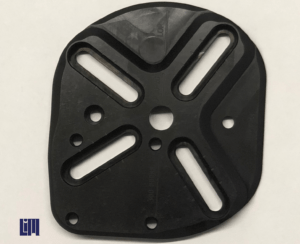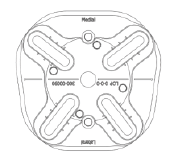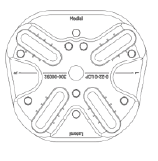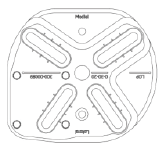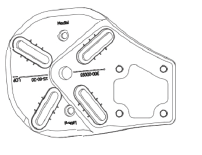Here at LIM Innovations we pride ourselves on the diversity of our team. We have a fantastic group of engineers, designers, machinists, clinicians, and amputees with relevant experience in the field. With such a diverse group working behind the scenes, we invite you to join one of our staff members each week for an in-depth look at what they bring to table. It is our goal to provide our loyal reader’s a behind-the-scenes look at LIM Innovations. Jesse Williams, Chief Technology Officer, picks up the pen this week to discuss photogrammetry with your cell phone and free software.
You can use any camera including your cell phone to make a great 3D image. The process is called photogrammetry, and it’s awesome. You should try it right after reading this blog. The software you need is free!
To do this, you need to take pictures of the object at many different angles. Usually you need 20 to 60 photos to make a great scan. This may sound like a lot, but with most modern cell phones, you can continuously take pictures if you hold down the capture button. When I do this, I hold down the capture button, and walk around the image. In about 45 seconds, I can capture up to 100 images. Once the images are taken, special software can convert them to a 3D scan. The process is called photogrammetry. The software recognizes patterns in the photos, and find the same patterns in different photos. Then uses a triangulation process to understand the position each photo was taken at. On a side note, triangulation is the way GPS location works. Anyway, once the software knows the positions of the photo it can understand the 3D shape in the photos, and generate the 3D model.
There are several different software packages available to do this, and they can range in price from free to very expensive. I use the software developed by Autodesk, and they have three different iterations. The oldest is called 123D Catch. I’ve had okay results with this program. Next they developed ReCap, short for Reality Capture. This is a free program that runs completely online in your web browser. This program works very well. Lastly, Autodesk is in the process of developing Project Momento, and you can download the beta version for free here. This program works like magic. Both Recap and Momento use the Autodesk servers to process the photos and convert them to the 3D model, and in my experience, this can take from 30 minutes to 4 hours (there is some serious processing going on here). Autodesk will then email you when the process is done.
Below you can see a scan of Luigi, a little guy my wife made for me years ago. (He’s definitely seen better times.) Here’s one of the pictures used in the scan (I’m using a Moto X cellphone).

I took 86 images in about 20 seconds to make this 3D scan using Project Memento. 86 images is overkill, but it’s easy just to hold down the capture button and take a lot of images.
You can see that Lughi looks good but the edges of the image don’t because my photos centered on Lughi. In the next images shows the polygons that make up the 3D image.


There are some tricks to getting a good result: glare on the object will kill it, the photos shouldn’t be blurry, and there should be enough photos, and the object should take up most of the photo. Also, there is no way the software knows scale in the image, so if size is important you will need a reference object in the image to calibrate it.
It is possible use photogrammetry to generate 3D scans of patients residual limbs. We can make the patient customized Infinite Socket from this data. While this process is not officially supported, I would be happy to work LIM Specialist to test this data capturing technique. If you are interested in trying it out, please email me.
